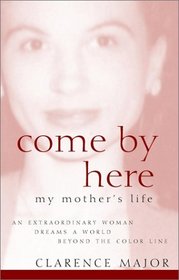Search -
Come By Here: My Mother's Life
Come By Here My Mother's Life
Author:
From Publishers Weekly — Using his poet's eye for detail and his novelist's ear for speech, Major (who was shortlisted for a 1999 National Book Award for Configurations) mutes his voice to create his mother's memoir. With authentic plainness, Inez who is light, not white, relates her journey to self-fulfillment through a world of demented racial ... more »
Author:
From Publishers Weekly — Using his poet's eye for detail and his novelist's ear for speech, Major (who was shortlisted for a 1999 National Book Award for Configurations) mutes his voice to create his mother's memoir. With authentic plainness, Inez who is light, not white, relates her journey to self-fulfillment through a world of demented racial ... more »
ISBN-13: 9780471415183
ISBN-10: 0471415189
Publication Date: 4/12/2002
Pages: 288
Edition: 1
Rating: ?
ISBN-10: 0471415189
Publication Date: 4/12/2002
Pages: 288
Edition: 1
Rating: ?
0 stars, based on 0 rating
Genres:
- Biographies & Memoirs >> Community & Culture >> Black & African American
- Biographies & Memoirs >> Reference & Collections
- Biographies & Memoirs >> Specific Groups >> Women
- Biographies & Memoirs >> Memoirs
- Literature & Fiction >> World Literature >> United States >> Black & African American >> Major, Clarence




